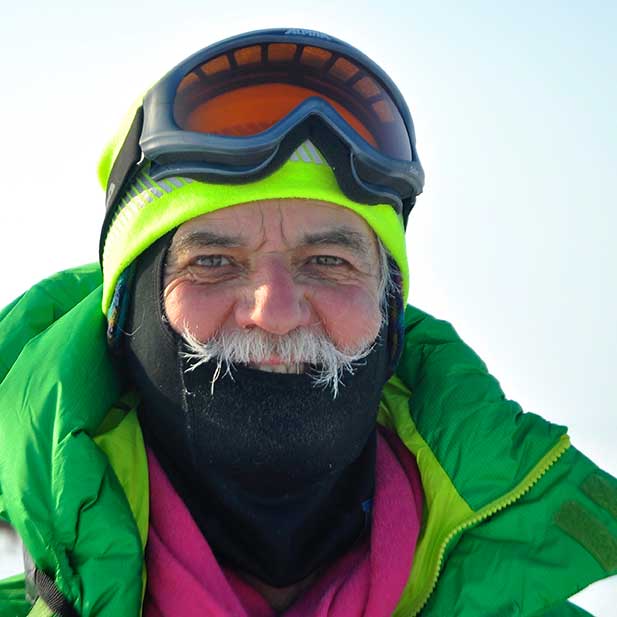Stormy Nights in the Yaranga
By Holger Hoffmann
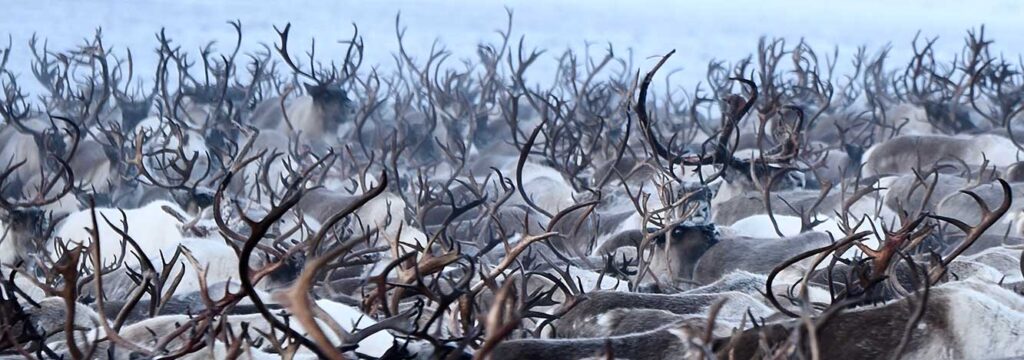
In the winter, the days are short in Chukotka, and stormy winds sweep across the wide tundra in the far east of Siberia. The yaranga has provided the reindeer nomads with protection for centuries. It is kept open during the day and does not provide protection against the cold, but only against the wind. The structure’s concept is very old and stormproof. It consists of three thick wooden main posts, four shorter T-shaped poles, and a wooden ring attached at half height. About 50 reindeer skins, sewn together, are stretched over it. The tensioning ropes are additionally secured with weights against the strong storm winds. Overnight, the yaranga is locked, and a bucket is available for urgent needs.
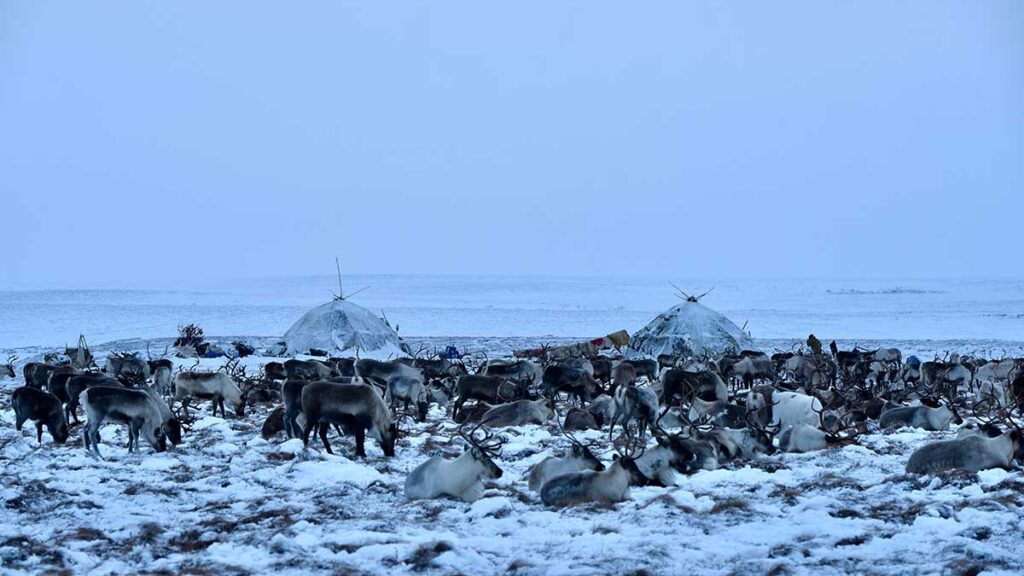
Once a day, a fire burns in the center of the yaranga for cooking. Even in extreme weather conditions, wood has to be collected from small, widely scattered bushes every two to three days, which can take several hours.
There are many devices and utensils lying around in front of the yarangas, and sledges are leant against the tent walls, where they also serve to stabilize against the storm winds. Reindeer skins are hung on a taut rope between the yarangas.
Two snowmobiles are currently unusable and waiting to be repaired. We don’t see any reindeer, but there are six dogs in the camp.
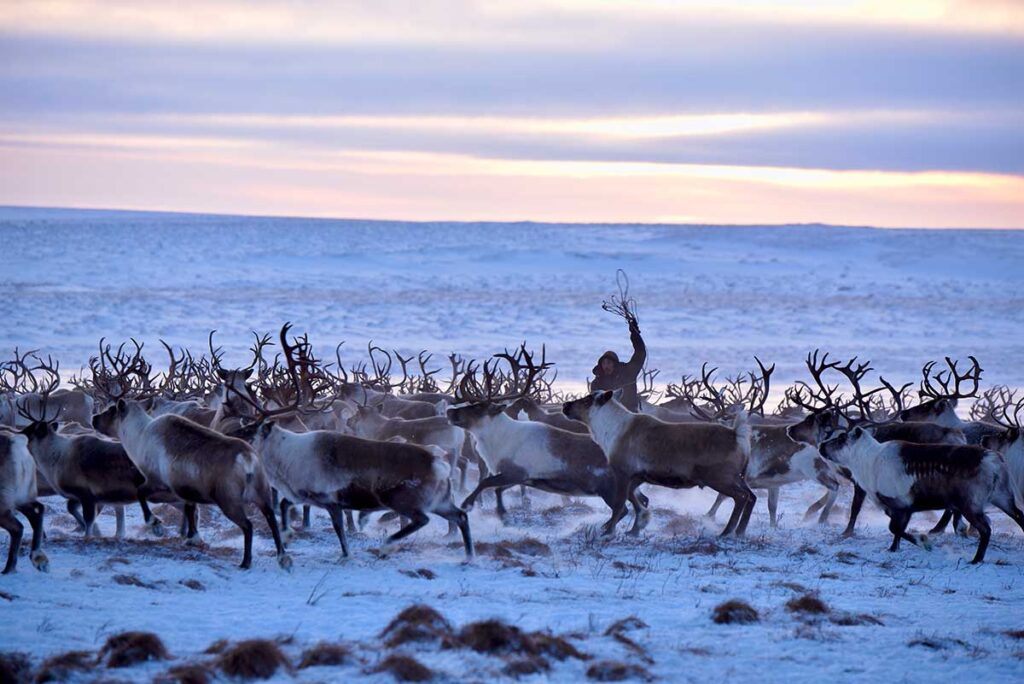
Ilya will spend the night alone with the reindeer in the tundra to protect them from the wolves, beginning with a 2 to 3 hours trek to reach them. He carries some food in his backpack, a thermos, wood, and furs. It would be unimaginable for us to spend a night alone in the wilderness, bereft of weapons and shelter in such a cold.
However, for the nomads, this seems to be everyday life. “We need the reindeer, but the reindeer also need us.”
Marina called for us when the reindeer appeared on the horizon the next morning. Sergej ran towards Ilya with the dogs and was now driving the flock of 1,700 animals toward the camp. Ilya appears to us like a hero after a long, cold, lonely night in the wilderness. He takes it easy because the walk has warmed up his cold limbs.
Many large animals are in the flock, and most of them still have impressive antlers at this time of year. Two animals are to be captured and slaughtered.
Four men swing the lasso, and Marina approaches the first of the captured reindeer with a knife.
I expected her to stab it, but one of the men had already done so without my noticing. He stepped next to the trapped, calmly standing animal and rammed the knife invisibly into its heart.
The animal freezes, distraught as if it hadn’t processed what just happened. Its knees buckle, but only after a few seconds, as it bleeds to death inside. Agony and convulsions last only for seconds. The woman immediately set about removing the fur from its legs and body. Then the carcass, still steaming in the cold, is dragged into the yaranga, and there expertly dismembered. The head is severed, and the skull is opened. Marina divides the brain into six parts and holds one out to me. Uncomfortably, and with a secret wish to refuse, I accept and dig into the soft, still-warm mass. The consistency and taste are fine and delicate.
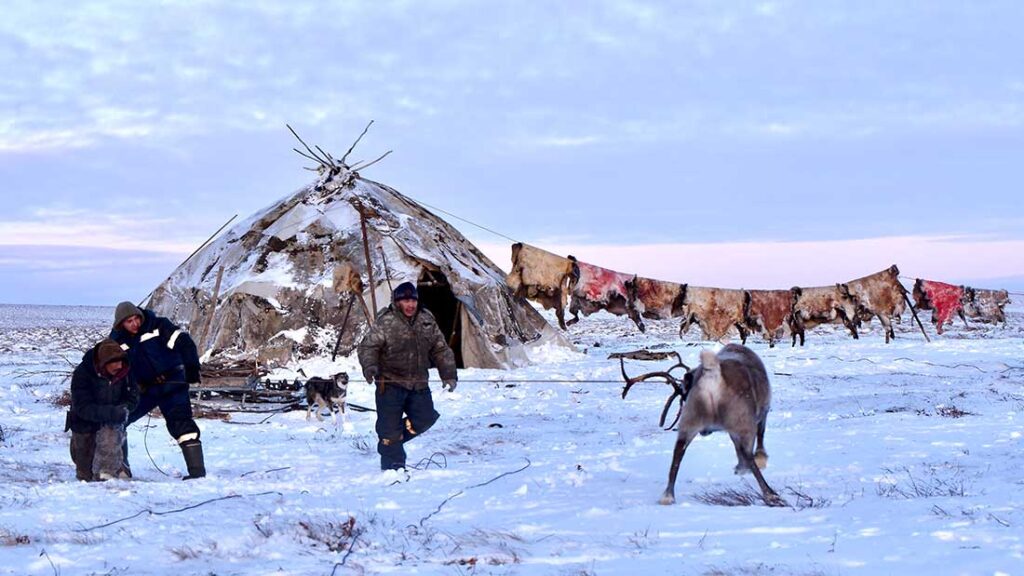
With anticipation, I watch Sergej as he splits the bones and extracts the marrow. Every bit of the reindeer is put to good use; the fresh blood soup is amazingly tasty, even the already gnawed-on bones are made into flour, and the reindeer feet are stored and subjected to a week-long fermentation process in the spring. Anything that cannot be eaten immediately is placed on a plastic sheet and frozen within a few hours.
Marina climbs onto the yaranga every morning with a bent piece of wood and knocks off the accumulated snow.
Even with temperatures currently being mild for local conditions, only a harmless -15 to -20 degrees Celsius, the snow is very fine and swirls around in the rising sun. The fur clothes and shoes are also knocked out regularly so that the sweat, which has turned into ice crystals, does not impair the cold protection. After that, water is fetched in the form of ice from the nearby frozen pond and melted in kettles by the fire. Snow, on the other hand, is not used as the water from the lake is healthier owing to the minerals it contains. The closest neighboring brigades are 20 km and 70 km away. Marina exchanges news with the brigades three times a day using a radio that must date from the Soviet era.
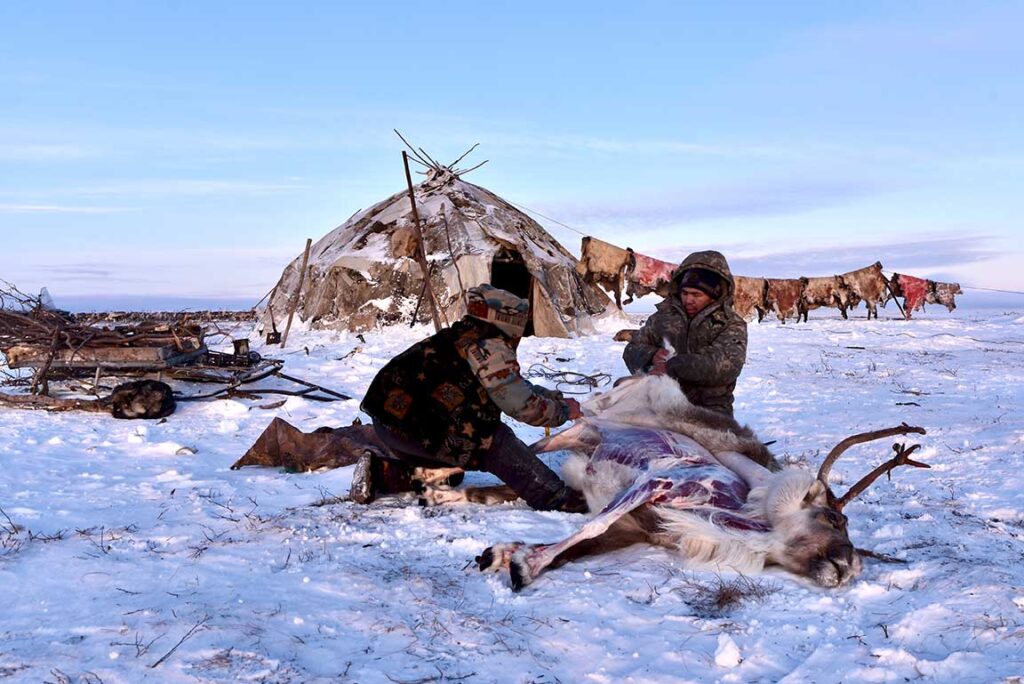
Today the sun doesn’t want to shine through the layers of clouds. The weather forecast announces a blizzard.
During the day, the storm is so strong that I can’t handle it and quickly seek refuge in the yaranga again. During the night, the yaranga trembles, and ice formed on the inside now falls like snow onto the permafrost ground.
Holger Hoffmann
Holger Hoffmann is a Swiss travel and documentary photographer. To date, he has traveled to over 100 countries.
He has visited Siberia nine times, mostly in winter, visiting reindeer nomads. He is particularly fascinated by the customs and daily life of people who have preserved their traditional culture. He is deeply impressed by how they cope and adapt to the advances and pressures of the modern world. He has published numerous travel and photo reports in various magazines.

